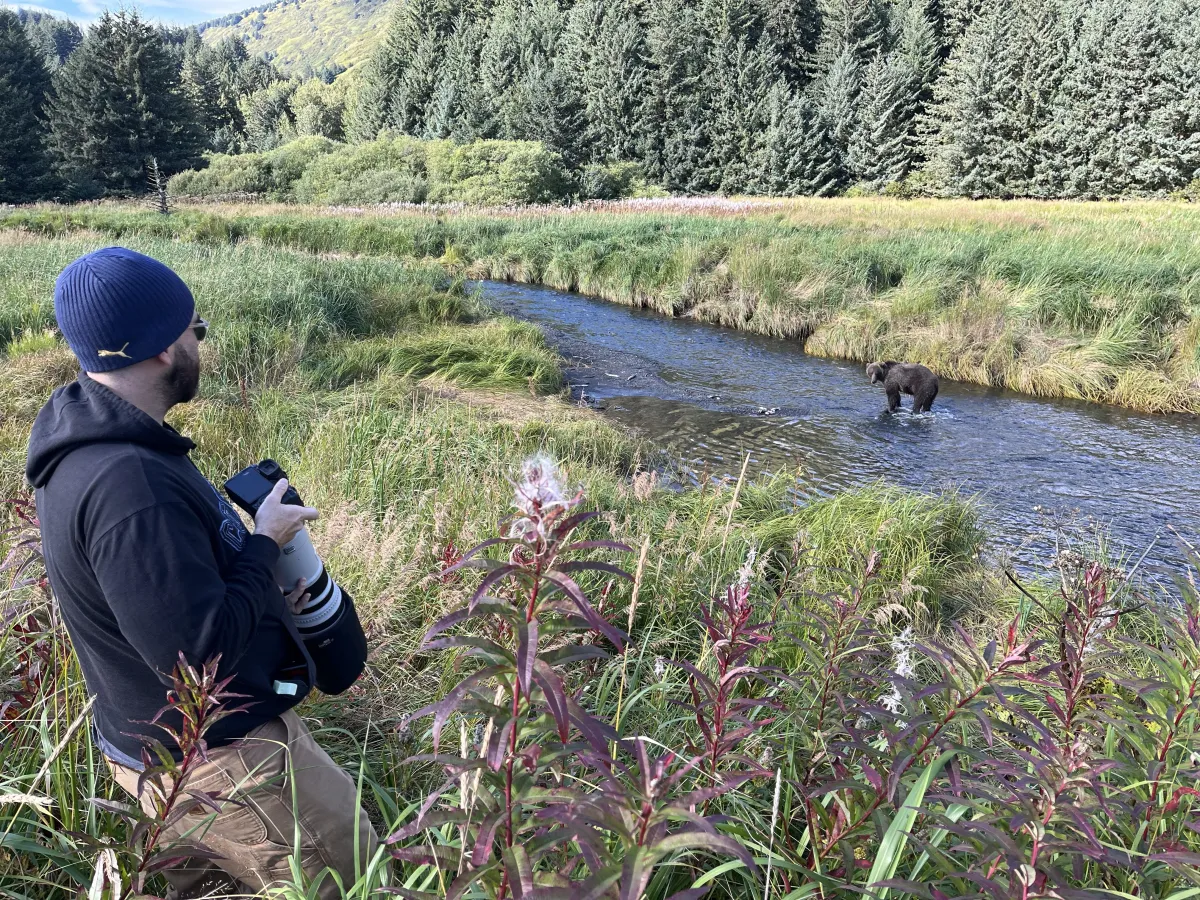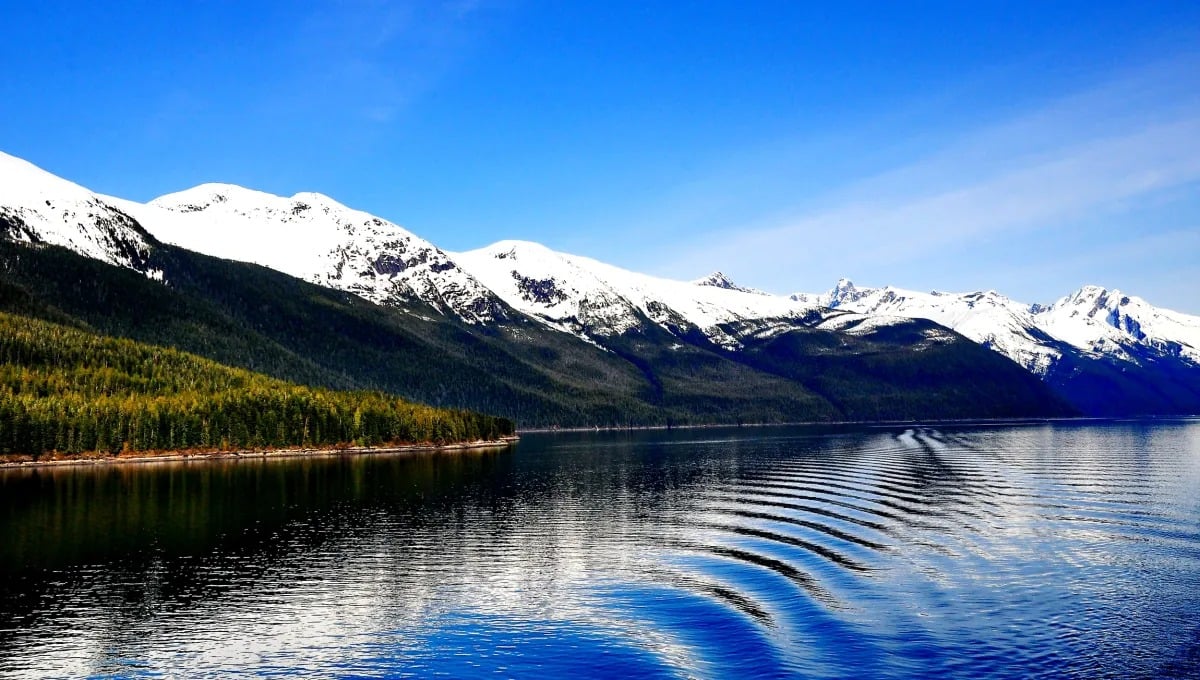
There are few experiences as unforgettable as an excursion into the breathtaking wilderness of Alaska. The state's immense landscapes and abundant wildlife provide a wealth of adventures for every traveler. Among the many thrills of an Alaskan adventure is seeing animals in the wild – and there is no animal more iconic than Alaska’s bears.
Home to a higher density of bears than any other state, Alaska is undoubtedly bear country. It's not just the remote wilderness that bears frequent; they can also be found meandering into populated areas, a testament to their adaptability and the state's commitment to coexistence. With such a high density of bears, you are almost guaranteed to encounter a bear while out on your adventures.
This makes practicing bear safety an essential skill while on your trip to the Last Frontier. It's not just about ensuring your safety but also about protecting the bears. In this guide, we will walk you through the basics of bear safety, so you can stay safe on your trip and ensure that bears remain a key part of Alaska for generations to come.
What Types of Bears Live in Alaska?

Alaska serves as home to three species of bears: the brown bear, the black bear, and the polar bear.
Brown Bears are the most common in Alaska and include the larger coastal brown bears and the interior grizzlies. Their habitats range from the misty fjords in the southeast to the open tundra and mountains of the Interior to along the tidal land of the coast. They vary in size and color, from vibrant blonde to black. Brown bears are much larger than black bears and possess a clear hump on their shoulders.
Black Bears, smaller but still impressive, primarily inhabit forest regions but are adaptable enough to venture into suburbs and towns. They're most commonly seen in south-central and southeast Alaska, particularly around campgrounds, hiking trails, or along roadside. They are the smallest of Alaska’s bears and have narrower snouts and more rounded shoulders than brown bears.
Polar Bears, an emblem of the Arctic, dwell along Alaska's northern coasts and the sea ice, specifically in the Arctic National Wildlife Refuge and around the native village of Kaktovik. These creatures are often spotted hunting seals or navigating sea ice. They are incredibly rare to encounter, and will only be found near and above the Arctic Circle.
Bear Safety Tips

In the Alaskan outdoors, a bear encounter is always a possibility, whether you're trekking a well-trodden trail or exploring remote backcountry areas. Each type of bear you encounter should be treated with respect and bear safety should be practiced everywhere you go. To ensure your safety and that of the bears, here are some essential safety tips:
Always Keep Your Distance
As a golden rule, maintain at least 300 yards distance from bears. Spotting a bear from your vehicle? Find a safe spot to pull over, switch on your hazards, and enjoy this special moment from the security of your car. Also, resist the lure of close-up photos or selfies with the bear – these are wild animals, not movie stars.
Hike in Groups
Bears tend to avoid larger, noisier groups, making group hikes a safer option. Try to hike in groups of 3 or more. If you are hiking along, carry a bear bell or a small speaker to make noise while you are walking to ensure that you do not surprise a bear. Many bear attacks are the result of a startled bear, so make your presence known to ensure bears can leave the area or are aware of you before you walk in front of them.
Stay Calm
In the event of a bear sighting, your calm demeanor is vital. Avoid shouting or sudden movements which could potentially provoke the bear. Instead, calmly announce your presence by saying "Hey, Bear" in a steady voice. Stand your ground, stay tall, and never attempt to outrun the bear. Slowly waving your arms can make you appear larger and less like prey to the bear.
Always Carry Bear Spray
Regarded as your best defensive tool in a bear encounter, bear spray is a must-have. Available at outdoor outfitters and stores across Alaska, bear spray delivers an irritating cloud that effectively deters an advancing bear. Familiarize yourself with its operation and always carry it in an easily accessible place, such as your waist belt (and never in your backpack). Make sure you always have the safety harness on your spray and you are familiar with how to remove it quickly. Always plan on carrying at least two canisters of bear spray and make sure multiple people in your group have their own can.
Secure Your Food
Bears possess an acute sense of smell and are often drawn to human food. When camping, always secure your food in bear-resistant containers or designated bear boxes at campgrounds. If you're eating and a bear approaches, quietly pack your food away and slowly withdraw. Remember, it's illegal and dangerous to feed wildlife in Alaska, and can result in heavy fines and the death of the bear.
Plan Ahead and Stay Informed
Local rangers, park authorities, and online resources often provide up-to-date information on bear activity. Leverage this information when planning your hiking routes to avoid high bear activity areas. Trailheads can often have signs warning of recent bear sightings. Do not hike on the trail if a bear has been in the area recently.
Look for Bear Signs
Bear scat, prints, or trails are early warnings of a bear's presence in the area. Spot these signs, and it's time to change your route.
Yield the River to Bears
During the salmon run, bears are often found fishing along rivers and creeks. If you're fishing and a bear shows up, quietly retreat from the water, maintaining a safe distance. Never throw fish to a bear or allow it to engage with your fishing line. If a bear shows interest, cut your line and leave the area.
Never Run
In the presence of a bear, always hold your ground. Running may trigger a predatory response, leading to a chase. Make yourself appear bigger, make noise, and have your bear spray ready in case the bear gets too close.
Local Tip
Bear spray is available throughout the state at outfitter stores, camping stores, and guiding services. It typically is around $50-60 a can, but you can save money by checking with your accommodation to see if they have a bear spray exchange. Many travelers will donate their unused cans to hotels to allow other travelers to carry it for free. Also check on Facebook Marketplace for locals selling cans at a discount (check to make sure they are not expired or used), or check with local coffeehouses in small towns to see if they rent bear spray. If you are traveling on an airplane, you cannot take bear spray with you, so you will need to pick it up at each location.
Traveling to Kodiak? Check at the Harborside Coffeehouse for a free bear spray rental to use throughout your stay!
Safely Seeing Bears in the Wild
Observing Alaska's majestic bears in their natural habitat is an extraordinary privilege. These magnificent creatures, while inspiring awe, deserve our respect and mindful consideration. They are not threats if given the space and respect they deserve. By adhering to these bear safety practices, you can ensure the preservation of these remarkable creatures and enrich your Alaskan experience with safe and unforgettable encounters.

